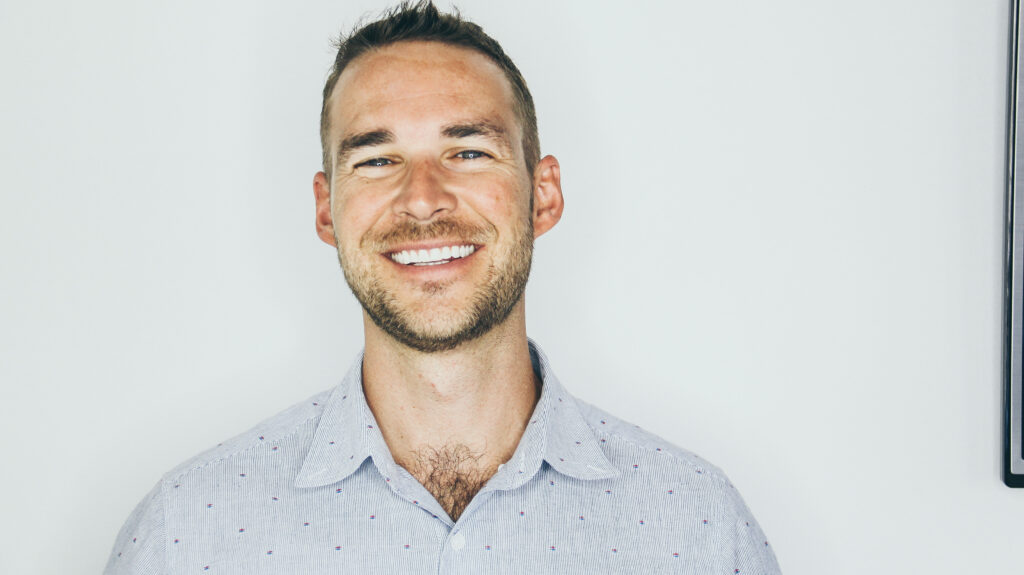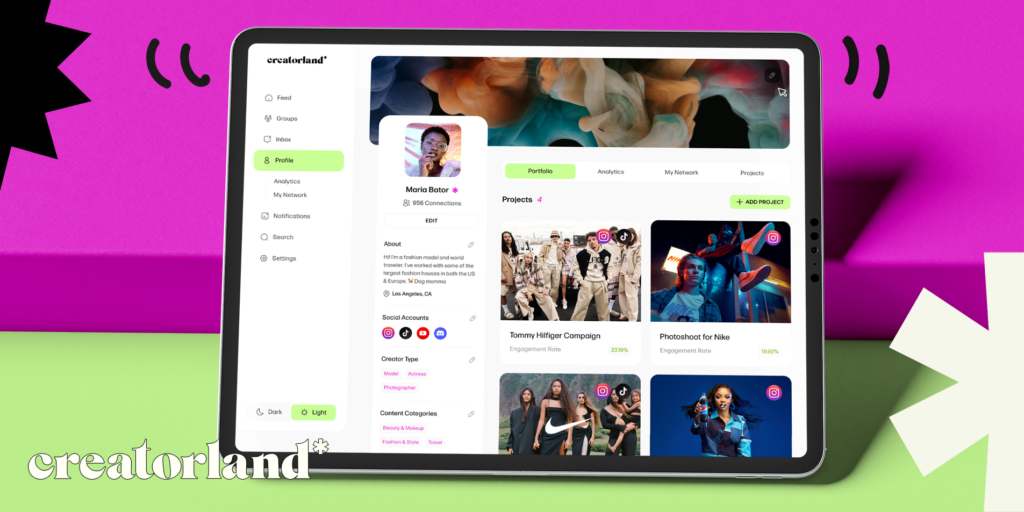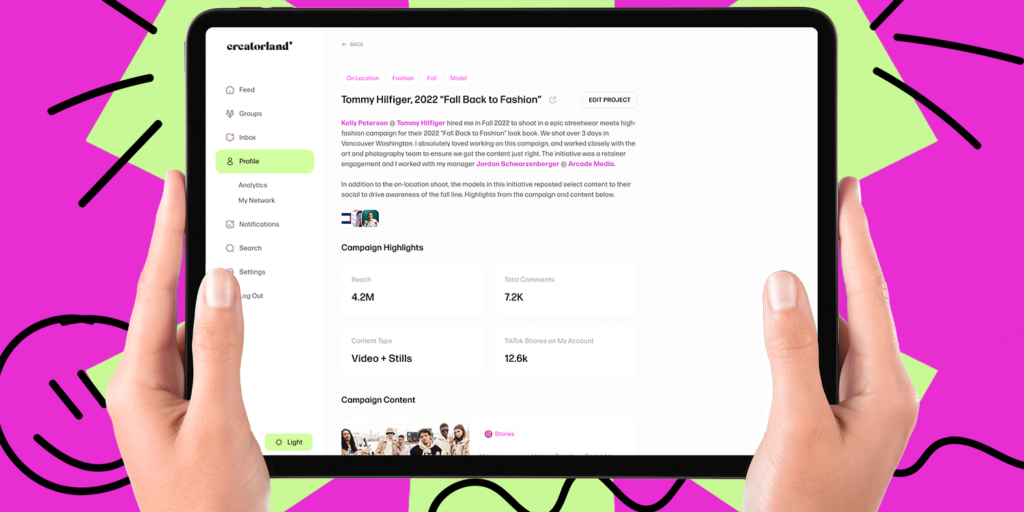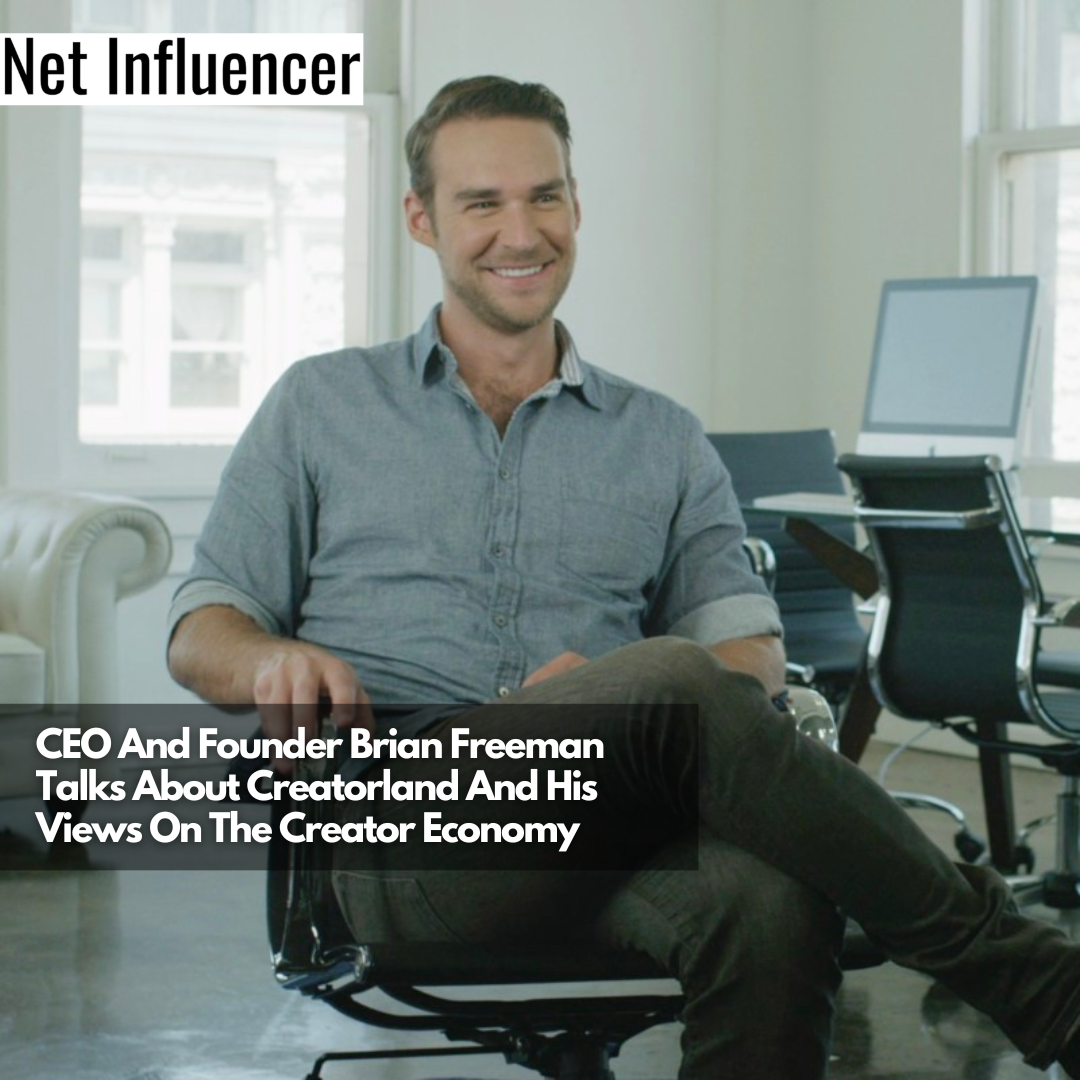Technology
Brian Freeman: Net Influencer Interviews Brian Freeman
As someone who has been in the creator economy for almost a decade, Brian Freeman saw the gap between brands and creators in the industry. This created an opportunity for him and his co-founders to create Creatorland, where all creators can connect with others within the industry for free.
As someone who has been in the creator economy for almost a decade, Brian Freeman saw the gap between brands and creators in the industry. This created an opportunity for him to create Creatorland, where all creators can connect with others within the industry for free.
Can you tell us about your background and what inspired you to start Creatorland?
Brian Freeman has been in the creator economy for about nine years. He pivoted his last company from a dating app to a nano influencer marketplace, one of the first pioneers in the US.
Brian started a female-focused dating app called Wyldfire back in 2013 and saw its fastest growth after they had company-initiated competitions involving sororities. The company incentivized sororities with a prize for getting the most users on the app. The sorority that won by a large margin were the ones that posted on Instagram the most.
After, Brian went on to pivot the company to Heartbeat, which was a scalable way for brands to leverage non-traditional influencers, everyday people, in the same way Wyldfire was able to tap into them on the campus rollouts.
He worked with Wyldfire from 2013 to 2015 and pivoted it into Heartbeat in 2015. During this time, he saw some major issues within the industry, namely gaps between how brands understood creators and vice versa and how the two parties weren’t really interacting with each other — everything was purely transactional.
In 2017, Brian and his co-founders were accepted into the prestigious accelerator program Techstars, where he was able to meet and network with elite members of the Los Angeles and Silicon Valley tech and media community. This allowed Brian to network and build something new as a means of changing the existing landscape of content creation.

While there are thousands of tools out there for creators, none focus on building better or long-term connections with the people who buy from them, which is a stark contrast to the way networking works for knowledge workers on LinkedIn. This has become a lightbulb moment for Brian, causing him to want to professionalize the space and give creators the platform to build their careers.
“LinkedIn was a major catalyst for growth in my journey as an entrepreneur, and we want to bring that type of opportunity to creators worldwide who are currently being left out. Creators have been craving their own professional network, and we’re excited to finally offer a platform exclusively designed for their needs. Our features are tailored to give creators a new way to generate new business, learn from the most successful creators & industry leaders, and build long-term professional relationships in the creator economy.”

While there are thousands of tools out there for creators, none focus on building better or long-term connections with the people who buy from them, which is a stark contrast to the way networking works for knowledge workers on LinkedIn. This has become a lightbulb moment for Brian, causing him to want to professionalize the space and give creators the platform to build their careers.
“LinkedIn was a major catalyst for growth in my journey as an entrepreneur, and we want to bring that type of opportunity to creators worldwide who are currently being left out. Creators have been craving their own professional network, and we’re excited to finally offer a platform exclusively designed for their needs. Our features are tailored to give creators a new way to generate new business, learn from the most successful creators & industry leaders, and build long-term professional relationships in the creator economy.”
How do you define the creator economy, and what role do you see Creatorland playing in it?
Based on his experience, Brian defines the creator economy as the people who work in and around content creation of any kind, involving everyone from the founders of businesses supporting the creator economy to service providers like agencies, startups, and brands leveraging content to grow as well as the content creators themselves.
What are the primary features of the Creator?
For Creatorland, the process starts with rethinking. The team behind the platform considers the most important things for content creators who are making a name for themselves in the creative space.
For Creatorland, the process started with thinking deeply about what creators need to control their professional reputation online. While being a creator naturally involves being very public with the content they produce for their niche, sharing their professional goals and experience is often at odds with the content that made them famous in the first place. Limiting their ability to control how they’re perceived by agencies, brands, talent managers, and others who might want to hire or work with them.
One of their main focuses was creating case-study landing pages that resemble the after-action campaign reports typically generated by agencies for their brand partners. These landing pages serve as a central showcase for showcasing the campaigns and projects, and they are collectively referred to as the Portfolio.
Creatorland makes it easy for members of the creator economy i.e. studios, marketers, brand managers, or anyone who wants to bring a new face to their initiative, to view creators in a more professional light and contact them right on the platform for initiatives they might want to recruit them for.
Next up is Analytics, which plays a crucial role in the hiring process for content creators. However, there is a lack of a convenient method for creators to share their analytics with other professionals or compare them with one another. On Creatorland, creators have a user-friendly solution. Their analytics are effectively summarized, easily visible, and can be searched by their first-degree connections. Moreover, creators have the freedom to customize their analytics, deciding which ones they want to showcase to their connections and which ones they prefer to keep private.

This type of data is often only available to paying customers of an influencer-CRM product and can often be extremely expensive. Creatorland is offering this up for free (as long as you’re a first-degree connection to the creator). As a result, anyone can deep dive into the space, say you’re a creator comparing yourself to other creators.
Let’s say I’m a brand — am I able to see all of these creator profiles to create a connection, or is this just for creators only?
The creator economy isn’t split between creators and brands – they exist together. Brian has noticed that several marketplaces distinguish between the “brand” and “creator” experience, leading to an imbalanced playing field. However, on Creatorland, everyone joins through the same process, fostering a more fair and inclusive environment for all participants. Brian believes that this approach promotes an equitable landscape where everyone can actively engage.

Creatorland has a primary goal of providing comprehensive support to individuals in the content creation space. It enables anyone to easily access information about creators, including their current projects, areas of interest, and main focus.
Are there any costs for creators to have a profile in Creatorland?
Inspired by LinkedIn, creators & creator economy professionals don’t have to pay anything to maximize Creatorland. It’s free for anyone who wants to create a profile, meaning zero cost to create a public profile.
Brian mentions that he “wants Creatorland to be for everyone in the creator economy” in terms of who Creatorland was built for, but is “focusing on content creators and content professionals” to start. So whether you’re an influencer manager creating campaigns, a CEO of a creator economy company, or an entrepreneur who’s also a creator, you can build first-degree connections and build a professional reputation in Creatorland for free.
Can you share any success stories or examples of creators who benefit from using Creatorland?
Creatorland is currently in pre-launch and has been building a waitlist for the last couple of months, which now has over 4,000 creators and professionals. They’ve had a Discord open for the last three months, which has reached almost 1000 members. This is the start of the greater community around Creatorland, and the team has seen collabs, the sharing of best practices, and even new friendships emerge from this community. According to Brian, he’s even seen agency owners lean in to recruit creators for their initiatives in their Discord community.
Brian and his team are dedicated to addressing a common challenge for creators: education. Although Creatorland is in its early stages, their aim is to offer comprehensive educational resources covering a wide range of subjects. As part of this effort, they are launching a podcast called “The Creator Landscape” on their YouTube channel. Interestingly, they have collaborated with a creator they encountered through their community on Discord specifically for this purpose.
How do you see the future of the creator economy, and how do you envision Creatorland evolving to meet all those needs of the creators?
Brian expects to see a few major shifts in the creator economy, some of which are already taking shape. First, he expects more creators to receive full-time roles at brands, agencies, and creator economy startups as creator-led marketing becomes one of the primary marketing vehicles for consumer products. Second, he believes that more brands will emerge built around creator personalities – giving fans more choices on how to support their favorite artists and wear and use products that feel closer to their own interests and personalities. Third, Brian believes that AI is going to give birth to new forms of creative expression — an example of which is the world-building that we’re now seeing from creators on Fortnite in their new Fortnite Islands product.
As these trends develop and take hold, creators will become a more influential part of marketing decision-making internally, and new paradigms for creative expression will drive how marketers plan their next big initiative.





















